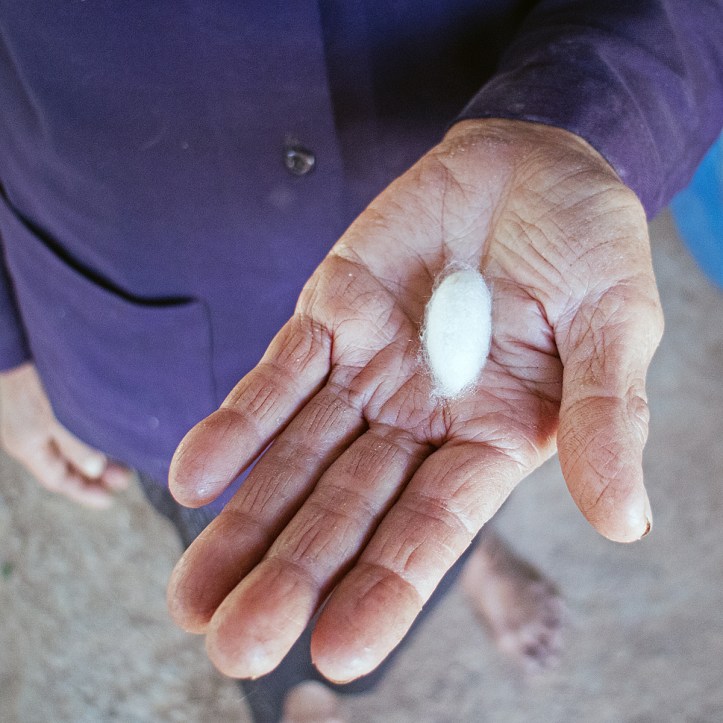Have you ever wondered about the journey of Thai silk, from the humble cocoon to the vibrant market stalls? Well, get ready to dive into the fascinating world of Thai silk production. From the moment those little silk worms start spinning their cocoons, to the intricate weaving techniques and the beautiful end products, there is so much to learn about this traditional craft. So, let’s embark on a journey through the stages of Thai silk production and discover the secrets behind its allure.
First, let’s talk about the silkworms themselves. These tiny creatures, known as Bombyx mori, are the ones responsible for producing the silk fibers used to create Thai silk. The silk worms munch on mulberry leaves, which provides them with the nourishment needed for their transformation. They then spin cocoons made of a single continuous thread, which can range in color from creamy white to pale yellow. It’s truly incredible how such simple creatures can create something so exquisite!
Once the cocoons are harvested, the silk fibers need to be carefully extracted. This process, known as reeling, involves unwinding the cocoon to obtain the silk thread. Skilled workers delicately extract the silk by unravelling the cocoon and carefully reeling it onto a wooden frame. The result is a long, continuous strand of silk that is ready for the next step in the journey.
Now, it’s time for the weaving process, where the magic really happens. Thai silk is known for its intricate patterns and vibrant colors, which are achieved through various weaving techniques. Skilled weavers use traditional looms to create the beautiful textiles you see in markets and stores. Each piece of Thai silk is a labor of love, often taking weeks or even months to complete. The dedication and craftsmanship put into these designs is truly remarkable, making each piece a unique work of art.
With this brief introduction to the journey of Thai silk, you’re now ready to delve deeper into the world of silk production. In the upcoming article, we’ll explore the various types of Thai silk, the history behind this traditional craft, and the role it plays in Thai culture. So stay tuned and get ready to discover the captivating story of Thai silk, from cocoon to market!
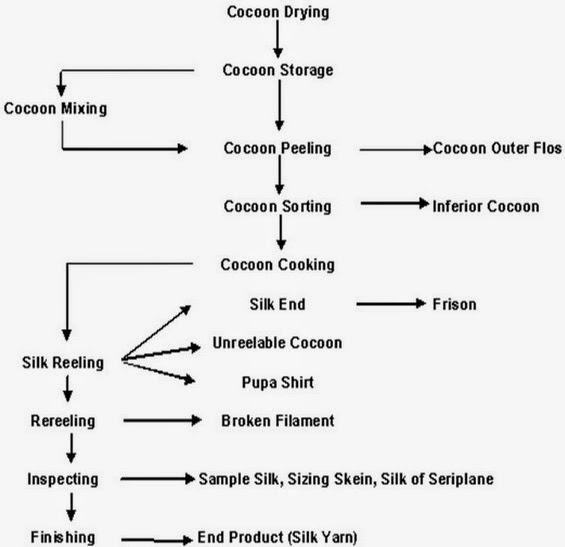
Cultivating Silkworms
Breeding Silkworms
Breeding silkworms is the first step in the journey of Thai silk. To begin, you will need healthy silkworm eggs, which can be obtained from reputable breeders. These eggs will hatch into silkworm larvae, also known as caterpillars.
Feeding Silkworms
Once the silkworms have hatched, they will need to be carefully nourished. Provide them with a constant supply of mulberry leaves, as this is their primary food source. Make sure to monitor their feeding habits closely and ensure that the leaves are fresh and of good quality.
Caring for Silkworms
Silkworms require a controlled environment to thrive. Maintain a consistent temperature and humidity level in their rearing area. Regularly clean their living space and remove any waste or uneaten leaves. As they grow, the silkworms will molt several times, and each time they do, they will shed their old skin and form a new one.
Harvesting Silk Cocoons
Identifying Mature Cocoons
After around 30 days of feeding and growing, the silkworms will spin their cocoons. You will need to carefully monitor their development to identify when the cocoons are mature. Mature cocoons are typically oval-shaped and have a strong, tightly woven texture.
Removing Cocoons
To harvest the silk from the cocoons, they need to be carefully removed from the rearing area. This delicate process requires patience and precision to avoid damaging the silk fibers. Gently separate the cocoons from the surrounding material and place them in a clean, dry container.
Sorting Cocoons
Once the cocoons have been harvested, they need to be sorted based on their quality. Experienced silk farmers can identify cocoons that have the potential to produce high-quality silk. These selected cocoons will be further processed, while the lower-grade ones may be used for other purposes such as cosmetics or animal feed.
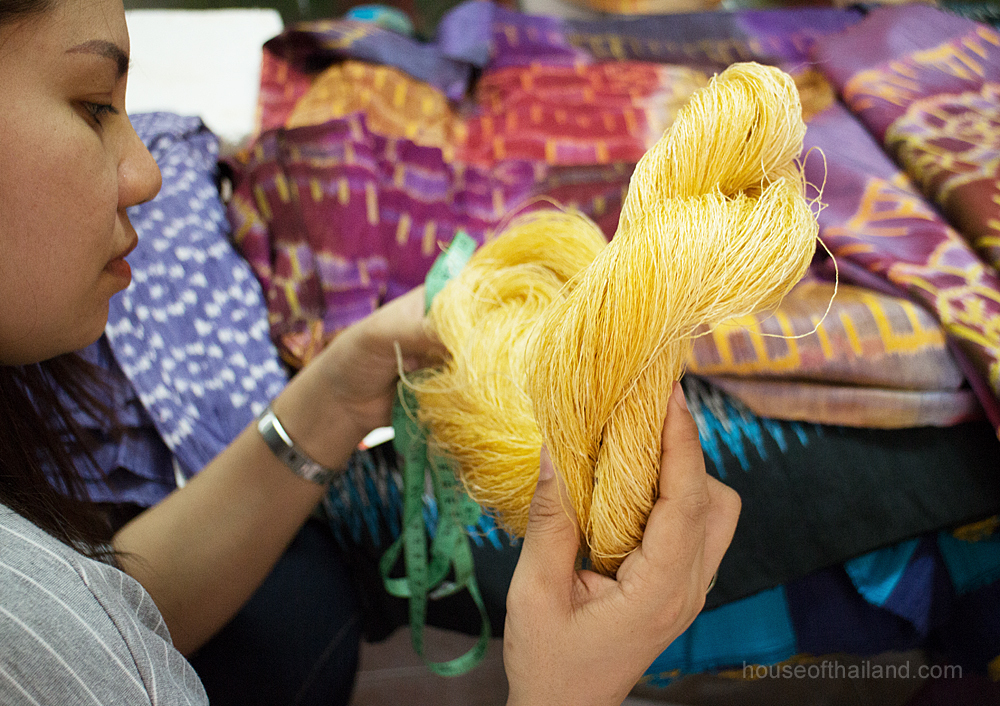
Processing Silk
Reeling Silk
The process of reeling silk involves unwinding the silk fibers from the cocoons. This is typically done by immersing the cocoon in hot water, which helps to soften the adhesive that holds the fibers together. Using a reel, slowly unwind the silk fibers, ensuring that they remain intact and do not break.
Double Reeling for Fine Silk
For the production of fine silk, a technique called double reeling is employed. This process involves unwinding the silk from two cocoons together, to create a stronger and more lustrous thread. The double reeled silk is highly prized for its quality and is often used in the creation of luxurious fabrics.
Spinning Silk
Once the silk threads have been reeled, they are ready to be spun into yarn. This is achieved by twisting the individual threads together using a spinning wheel or machine. The resulting yarn is strong and can be further processed into various forms, such as raw silk or silk thread.
Dyeing Silk
Preparing Natural Dyes
Natural dyes are often used to color Thai silk, as they provide vibrant and long-lasting hues. To create natural dyes, various plant materials, such as roots, leaves, or flowers, are used. These materials are boiled with water and then the silk is soaked in the resulting colored liquid, allowing the fibers to absorb the dye.
Chemical Dyeing Techniques
In addition to natural dyes, chemical dyes are also used to create a wider range of colors. Chemical dyes offer more flexibility and can produce intense and consistent shades. The silk is immersed in a dye solution containing the desired color, and then heat is applied to fix the dye onto the fibers.
Block Printing on Silk
Block printing is a traditional technique used to create intricate patterns on Thai silk. Woodblocks, carved with intricate designs, are dipped in dye and stamped onto the silk fabric. This process is repeated multiple times to create a repeating pattern. The block printing technique adds a unique artistic touch to the final silk product.
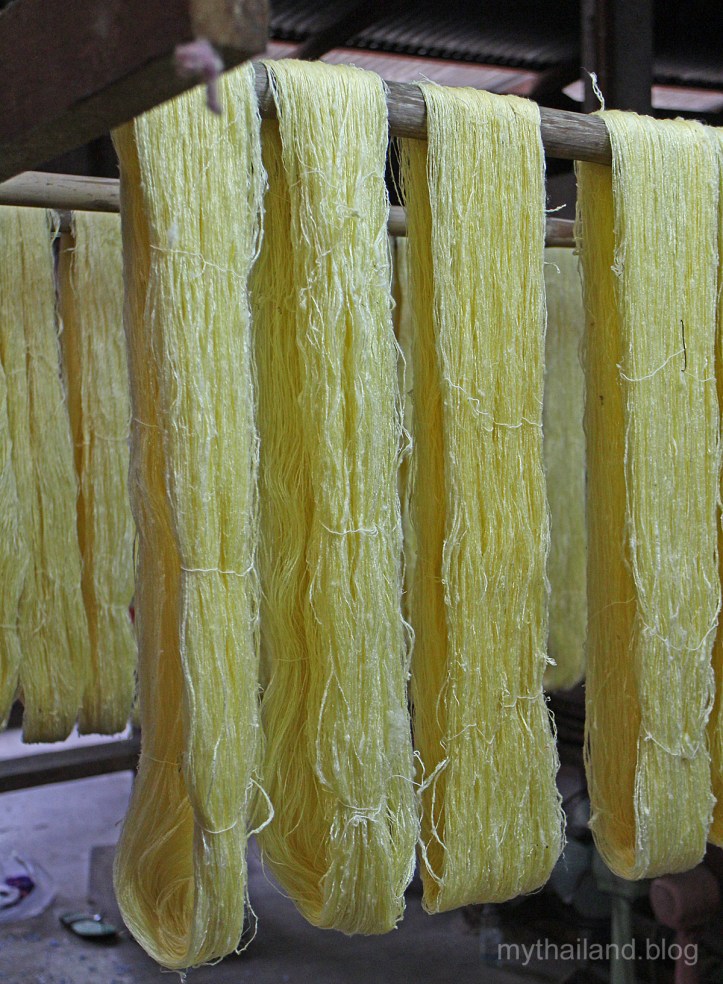
Weaving Silk Fabric
Selecting Patterns and Designs
Before starting the weaving process, you need to decide on the patterns and designs for your silk fabric. Thai silk is known for its intricate and vibrant motifs inspired by nature, traditional art, and cultural symbols. Take time to choose the right patterns that reflect the essence of Thai silk.
Setting Up the Loom
Weaving silk fabric requires a loom – a device used to hold the warp (lengthwise) and weft (crosswise) threads in place. The warp threads are attached to the loom, while the weft threads are interwoven to create the fabric. Setting up the loom correctly is crucial to ensure the uniformity and quality of the woven silk.
Weaving Techniques
Various weaving techniques can be employed to create different textures and patterns on the silk fabric. Some popular techniques include plain weave, satin weave, and twill weave. Skilled weavers use their expertise to bring the intricate designs to life, creating stunning Thai silk fabrics with intricate patterns and impeccable craftsmanship.
Quality Checking and Finishing
Inspecting Fabric for Defects
After the weaving process is complete, the fabric must undergo a thorough inspection to ensure its quality. Each section of the fabric is carefully examined for any defects, such as misweaves, loose threads, or inconsistencies in color or pattern. Any flaws are meticulously corrected to maintain the integrity of the silk.
Cleaning and Pressing
Once the fabric has passed inspection, it is time to clean and press it. A gentle cleaning process removes any remaining impurities or dyes from the fabric. After cleaning, the silk fabric is carefully pressed to remove wrinkles and create a smooth, lustrous appearance.
Adding Finishing Touches
To enhance the beauty and durability of the silk fabric, finishing touches are added. These may include additional treatments, such as softening agents or special coatings, to enhance the silk’s texture or protect it from damage. The finishing touches ensure that the final product is of the highest quality and ready for market.
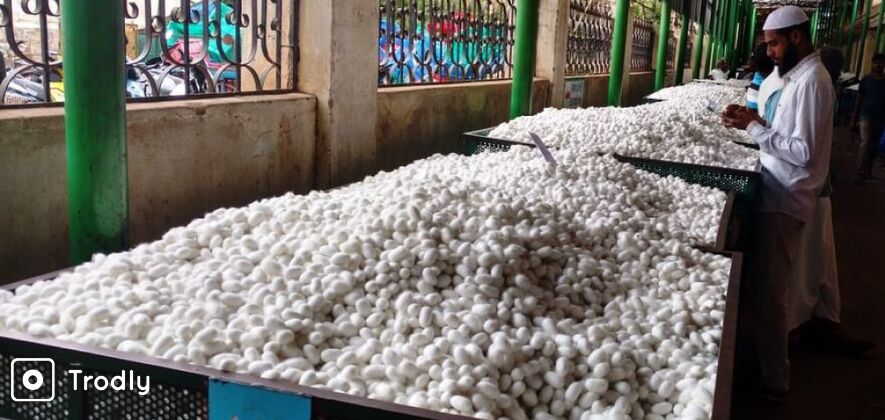
Marketing Thai Silk
Establishing Distribution Channels
To bring Thai silk to the market, it is essential to establish effective distribution channels. This can involve partnering with retailers, exporters, or even opening your own storefront or online shop. Collaborating with local and international organizations can also help expand your reach and access new markets.
Promoting Thai Silk
Promotion is key to showcasing the beauty and uniqueness of Thai silk. Utilize various marketing platforms such as social media, trade shows, and fashion events to raise awareness about Thai silk and attract potential customers. Highlight the craftsmanship, cultural significance, and eco-friendly nature of Thai silk to create a compelling marketing message.
Tariffs and International Trade
Navigating international trade regulations and tariffs is crucial when marketing Thai silk globally. Stay informed about import/export regulations, tariffs, and preferential trade agreements to ensure compliance and make informed business decisions. Seek guidance from industry associations or export promotion agencies for support in navigating these complexities.
Application of Thai Silk
Traditional Thai Clothing
Thai silk has a long history of being used for traditional Thai clothing, such as the iconic “chut Thai” or “Thai dress.” These elegant garments showcase the beauty and cultural heritage of Thailand and are popular choices for special occasions, weddings, and cultural events.
Home Furnishings and Décor
The versatility and luxuriousness of Thai silk make it a popular choice for home furnishings and decor. From curtains and upholstery to pillow covers and wall hangings, Thai silk adds a touch of opulence and sophistication to any interior design.
Fashion and Accessories
Thai silk is highly sought after by fashion designers and is used to create exquisite couture dresses, blouses, scarves, and ties. The smooth texture, vibrant colors, and intricate patterns of Thai silk make it a favorite among fashion enthusiasts and add a touch of elegance to any outfit.
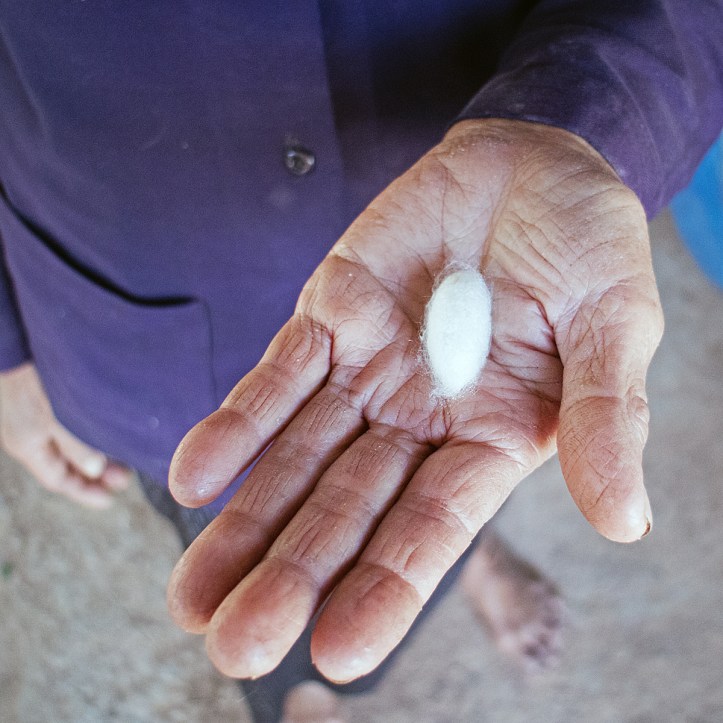
Revival of Thai Silk
Government Support for Silk Industry
The Thai government recognizes the importance of the silk industry and provides support to ensure its growth and sustainability. Initiatives such as financial assistance, training programs, and infrastructure development aim to revive and preserve the traditional Thai silk heritage.
Preservation of Traditional Techniques
Efforts are being made to preserve the traditional techniques of Thai silk production. Organizations and artisans work together to pass down the knowledge and skills of silk farming, weaving, and dyeing to future generations. Preserving these techniques ensures the authenticity and cultural significance of Thai silk.
Training and Skill Development
To ensure the continued success of the Thai silk industry, training and skill development programs have been implemented. These programs provide opportunities for aspiring silk farmers, weavers, and artisans to learn from experts and gain hands-on experience in various stages of silk production. By investing in skill development, the industry can thrive and maintain its high-quality standards.
Conclusion
The Economic Significance of Thai Silk
Thai silk plays a significant role in the country’s economy. Its production and marketing provide income and employment opportunities for numerous individuals and communities across Thailand. The success of the Thai silk industry is closely tied to the overall economic growth and prosperity of the country.
Cultural Importance of Thai Silk
Thai silk is more than just a fabric; it is a symbol of Thailand’s rich cultural heritage. Through the centuries, Thai silk has been an integral part of Thai traditions, rituals, and celebrations. It ties together the past and the present, honoring the craftsmanship and artistry of Thai artisans.
Future Prospects for Thai Silk
The future of Thai silk looks promising, with increasing global demand for sustainable and ethically-produced textiles. As consumers become more conscious of the environmental and social impact of their choices, Thai silk stands out as a natural and luxurious option. With continued innovation and investment, Thai silk is poised to captivate even larger audiences in the years to come.
In the intricate journey of Thai silk, from the cultivation of silkworms to the weaving of the final product, you are invited to witness the beauty and craftsmanship that goes into creating this timeless fabric. Through careful breeding, feeding, and care, silkworms transform their cocoons into exquisite silk fibers. The silk is then processed, dyed, and woven into a variety of stunning fabrics, ranging from traditional clothing to home furnishings and fashion accessories.
The marketing and application of Thai silk are pivotal to its success. By establishing effective distribution channels and promoting the uniqueness of Thai silk, it can reach a wider audience and gain international recognition. The application of Thai silk in traditional clothing, home furnishings, and fashion showcases its versatility and elegance.
The revival of the Thai silk industry is not only driven by economic factors but also by the preservation of traditional techniques and the government’s support. Through training and skill development, the future generation of artisans can continue to uphold the legacy of Thai silk, ensuring its cultural importance and economic significance for years to come.
Thai silk is not just a fabric; it represents the journey of a humble silkworm, the craftsmanship of skilled artisans, and the beauty of Thai culture. It is a testament to the rich heritage and the potential for a sustainable and prosperous future. So, whether you’re donning a Thai silk dress, decorating your home with silk furnishings, or simply appreciating the intricate detail of a silk fabric, you are partaking in the remarkable journey of Thai silk, from cocoon to market.
